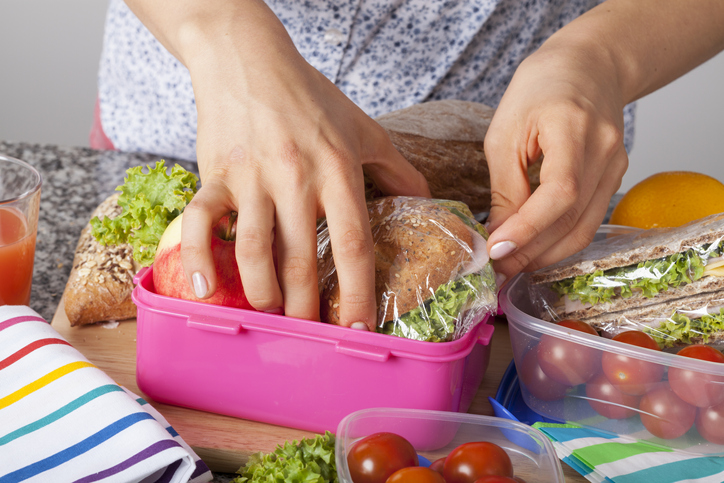Create Lasting Habits When Living With Diabetes
By Constance Brown-Riggs
 One of the best approaches to developing healthy lifestyle habits is to start small and build upon successes over time. This way, you can make lifestyle changes and create new habits that last.
One of the best approaches to developing healthy lifestyle habits is to start small and build upon successes over time. This way, you can make lifestyle changes and create new habits that last.
Goals such as eating a healthier diet, getting more exercise, and taking better care of ones' self are common. Unfortunately, so is giving up on goals that feel unsustainable or unachievable. Most people fail at diet and lifestyle resolutions because they set unrealistic goals, feel overwhelmed, and need more support as they strive to improve their health.
One of the best approaches to developing new habits is to start small and build upon successes over time. This way, you can make lifestyle changes and create daily habits that last. This is sometimes called the "tiny habits method."
Changing Health Behavior
Health behaviors, which are any actions or habits that contribute to maintaining, restoring, or improving overall health and wellness, are essential for managing diabetes. Some key diabetes health behaviors include self-monitoring blood glucose levels, eating a balanced diet, engaging in regular physical activity, taking medications as prescribed, and getting regular check-ups with a healthcare provider.
By adopting these behaviors, people with diabetes can better manage their disease, reduce the risk of complications, and achieve mental health and physical health.
"Behavior change is important in diabetes care because it can lead to improved disease management, a better quality of life, and enhanced self-care and self-management skill," said diabetes specialist Megan Warnke, who lives with type 1 diabetes.
However, despite the benefits of adopting diabetes health behaviors, research shows behavior change is challenging. Indeed, many people with diabetes struggle to lose weight, reduce consumption of sugary drinks, or do more physical activity.
"Behavior is difficult to change because most of us try to make too many changes at once," said Dr. Lakeisha Gatling, a licensed social worker in Houston. "In addition to making too many changes at once, we may also get trapped in thinking patterns such as all or nothing thinking, blaming, or negative mental filtering, which keeps us ‘stuck’ in maladaptive patterns of behavior which can prevent or delay change."
According to Dr. BJ Fogg, behavior scientist at Stanford University and author of “Tiny Habits: The Small Changes that Change Everything,” behavior change does not have to be overwhelming or daunting.
In “Tiny Habits,” Fogg introduces a simple and practical approach to behavior change. He suggests you start with a goal you want to achieve, break it down into small, achievable steps and identify where each step fits naturally in your life. Then, make sure you're taking the time to nurture each step, give yourself positive reinforcement for making progress, and celebrate when you reach milestones.
With enough practice and dedication, you'll eventually be able to make the behavior a part of your life. It will come naturally without relying on willpower or motivation alone. And that's where habit stacking comes in.
What is Habit Stacking?
.jpeg)
Habit stacking is a behavior change method created by Fogg that involves connecting an old habit to a new one. The habit stacking strategy is similar to behavior change plans that outline how, when, and where to perform a behavior.
However, habit stacking differs because you link the new behavior to another habit instead of a specific time and place.
Here's the habit stacking formula: after/before [current habit], I will [new habit].
For example: After I pour my cup of coffee each morning, I will meditate for one minute, or After I order at a restaurant, I will ask the server to put half the entree into a "to go" box.
Stacking habits can be approached in several ways, and the great news is that you are not limited to a single method of habit stacking.
The Chain Method
 "The chain method involves linking a new habit to an old habit," Warnke said.
"The chain method involves linking a new habit to an old habit," Warnke said.
For example, you want to start eating healthier snacks, so you chain it to an existing habit like preparing lunch for work. "Every time you prepare lunch for work, you portion out nuts to take for a snack," she said.
Using the formula the chain would read: After I prepare lunch for work, I will portion out nuts for a snack.
The Sequence Method
Sequencing involves doing a series of existing, related habits in order and adding a new one.
For example, if you're looking to increase your physical activity, Warnke suggested this type of sequence: After I wake up and turn the shower on, I will perform 20 squats [the new habit], and then take a shower.
The Pairing Method
The pairing method involves combining two habits, so they happen at the same time. This method is particularly effective when you use temptation bundling — linking a pleasurable behavior with an action you need to do.
For example, if your goal is to be more physically active and you love listening to your favorite playlist, Warnke advised that you pair the two activities. "Listen to your favorite playlist [existing pleasure] while out for a run [new behavior]," she said.
Healthy Habit Stacking Ideas - After/Before [Current Behavior], I Will [New Habit]
How to Start Stacking
Identify a trigger. Identifying a trigger is an essential first step in habit stacking. A trigger is an action or event that helps remind you to carry out your desired behavior, and it will usually come from an existing daily routine. Selecting triggers that are already part of your daily routine makes remembering and acting upon them easier. So start by creating a list of your current habits.
"The key is to find a behavior or habit that you already have almost on autopilot and then add a new one to it," says diabetes educator Vandana Seth. "For example, one of my clients struggled with drinking water throughout the day. We discussed the idea of drinking at least one glass first thing in the morning. Since he loved having his cup of coffee first thing in the morning, I asked him to consider keeping a glass of water right by the coffeemaker, and while the coffee was brewing, he drank his glass of water. After doing this consistently for a week, he began to look forward to his glass of water.”
It's also essential to ensure your trigger aligns with your new habit. "If you're trying to remember to take your diabetes medication with breakfast every morning but only eat breakfast on the weekend, that habit will only happen on the weekend," Warnke said.
Select a new habit. Start by stacking one new habit with one behavior that you’ve already established and perform the stack for one or two weeks. Once you've got the hang of it, add another habit to your stack. "Pick one or two new habits you'd like to work on. Trying to change everything all at once can be overwhelming and make you less likely to be successful," Warnke said.
Be specific. Whenever setting new goals or healthy habits, try to be as specific as possible. “For example, wanting to exercise more is a good intention, but it doesn't really explain how or when you will exercise more,” Warnke said. “Instead, think about what physical activity you'd like to do, how much time you can realistically spend doing it, and what days or times would work best.”
Don't be afraid to experiment! Trying different habits or stacking them differently can help you find the most beneficial and sustainable routine. It's also important to track your progress and reflect on the habit-stacking process, so you can determine what works best for you.
Aim for progress, not perfection. It is important to remember that striving for perfection can be counterproductive when it comes to lifestyle changes. For a more effective strategy, focus on making progress and celebrating small wins. It can take anywhere from a few weeks to several months for a habit to become automatic. “Changes aren't going to happen overnight,” Warnke said. “However, the small things you do every day to improve your health will lead to significant changes in the long run.”
Create accountability. For even more success with habit stacking, involve your diabetes support team. A support system can make all the difference in helping you stick with your lifestyle goals and other daily habits for diabetes management. "Accountability and support play a key role in using habit stacking and seeing sustainable results," Sheth said. "Dietitians can help guide clients with this process and collaborate on creating a structure to the old and new habits to build consistency with healthy eating as well as monitoring blood glucose.”
Finally, be patient. "While habit stacking may make it easier to maintain a habit, changes to lab results, diabetes symptoms, and weight still take time," Warnke said. Lifestyle behavior change can be challenging for people with diabetes, but it doesn't have to require overwhelming mental effort. Habit stacking is an approach that can help you set realistic goals and develop new healthy habits that have the potential to improve your diabetes management, blood sugar, and the quality of your life.
Learn more about healthy habits for diabetes:








